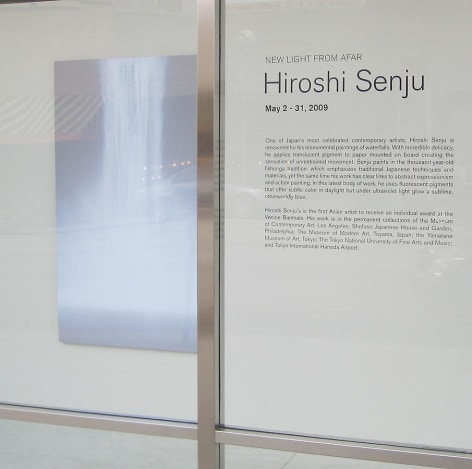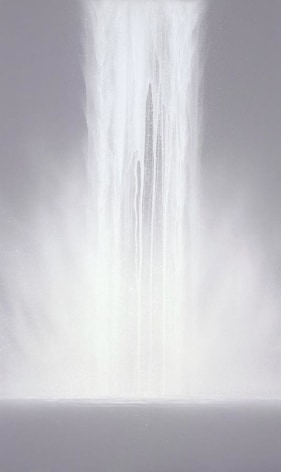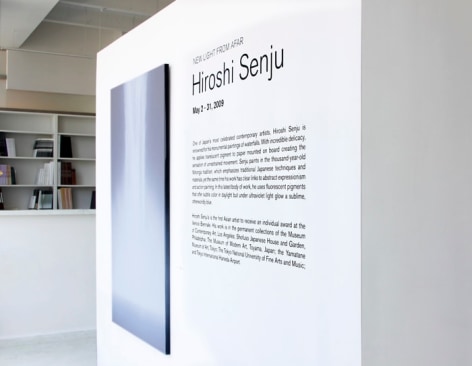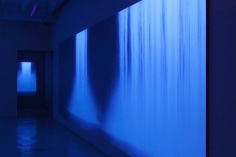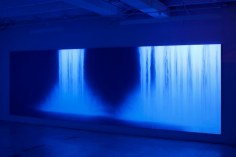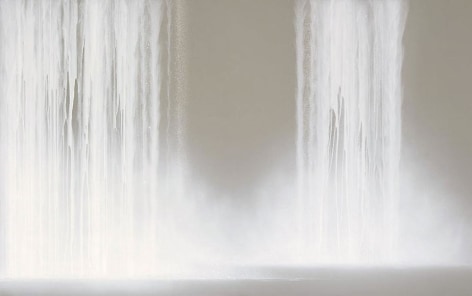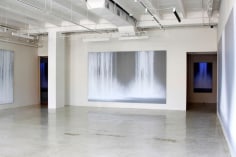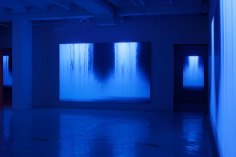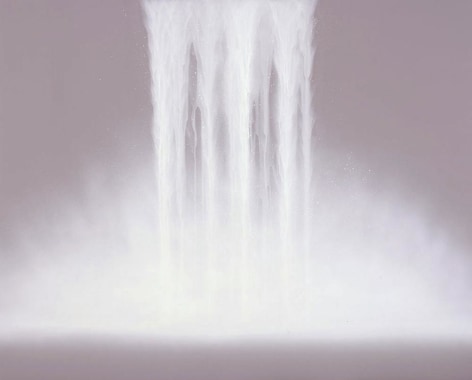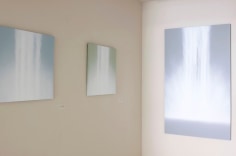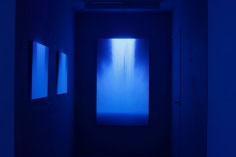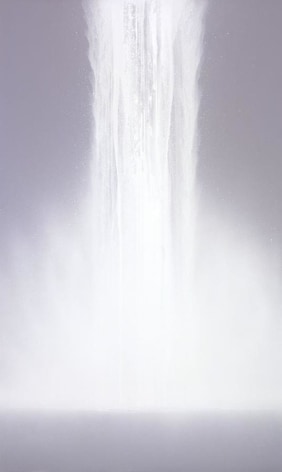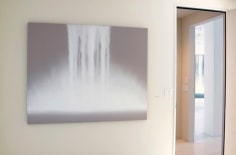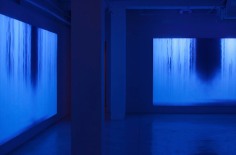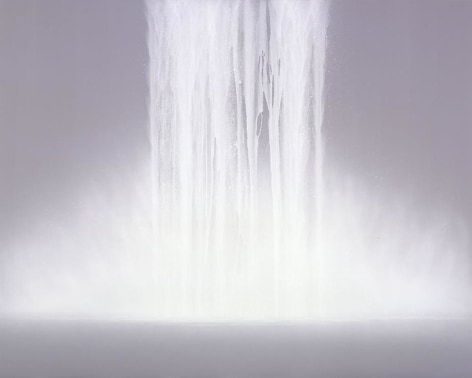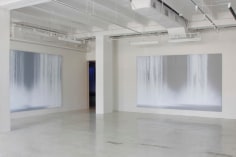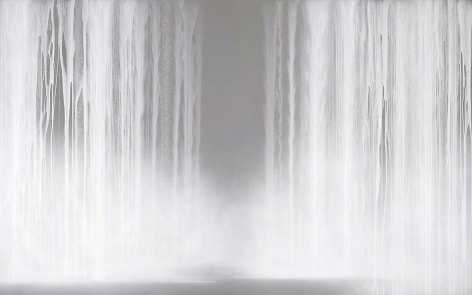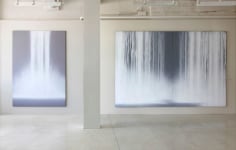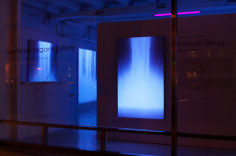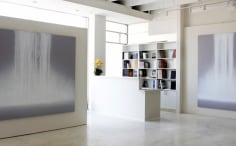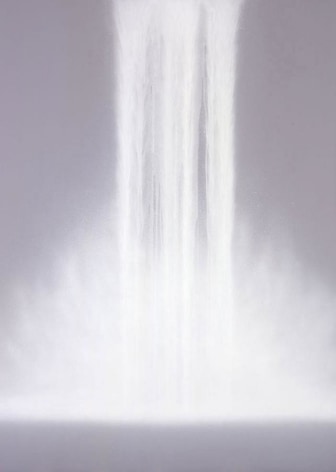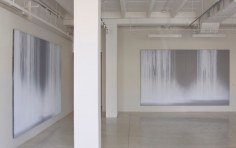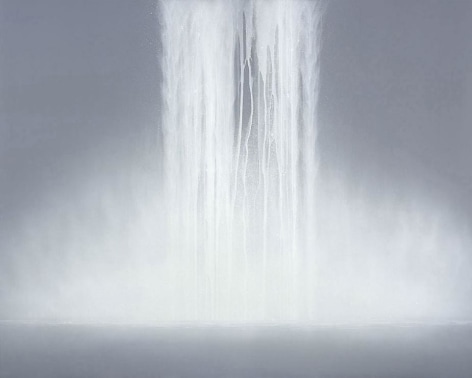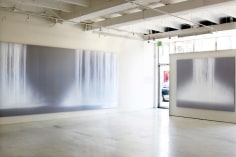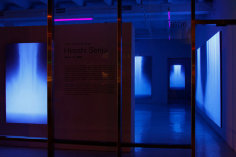
Widely recognized as one of Japan's most celebrated artists, Hiroshi Senju is renowned for his paintings of waterfalls. With incredible delicacy, he applies translucent paint onto paper creating the sensation of unrestrained movement. Senju began exploring the waterfall image almost 20 years ago with monumental black and white paintings. He introduced vivid color in 2003 and in 2007 returned to a restrained black and white palette, but with pigments that fluoresce a sublime electric blue when viewed under ultraviolet light. This newest series, being unveiled in Beverly Hills, is a culmination of all of these artistic explorations. In daylight the paintings are subtly colored yet under ultraviolet light they glow an otherworldly blue.
Hiroshi Senju is one of the few modern masters of the thousand-year-old Nihonga style of painting, which emphasizes traditional Japanese techniques and materials. His method, which originated in the Meiji period, involves creating paints by grinding mineral pigments from stone, shell and coral, using an animal-hide binder, and Japanese mulberry paper mounted on board. The resulting images are firmly rooted in Japanese tradition, yet wholly modern with a clear link to abstract expressionism and action painting.
The new works in this show inspire viewers to abandon the mundane world and enter a metaphysical realm. They evoke a deep sense of calm, conjuring not just the appearance of cascading water, but also its sound, smell and feel. The renowned critic Donald Kuspit says, "Unsupported by heaven or earth, yet a kind of angelic ladder between them, Senju's waterfalls have spiritual presence."
Hiroshi Senju was the first Asian artist to receive an individual award at the Venice Biennale. His work is in the permanent collections of the Museum of Contemporary Art in Los Angeles (MOCA), California; The Museum of Modern Art, Toyama, Japan; Yamatane Museum of Art, Tokyo, Japan; The Tokyo National University of Fine Arts and Music; and the Kushiro Art Museum, Hokkaido, Japan. In 2003, he completed 77 murals at the Annex of Daitokuji-Jyukoin, a prominent Zen Buddhist temple in Japan. He also created a mural for the foyer of the Shinto Shrine at the Grand Hyatt Tokyo. The following year, he was named the art director for Terminal 2 of Tokyo International Haneda Airport where he created a ceiling painting, an installation and a mural. In 2006, he designed a series of new fusuma (sliding screens) for Shofuso, the Japanese House and Garden in Philadelphia. Senju divides his time between New York and Japan, where he is the director of the International Research Center for the Arts and Kyoto University.
For more information, please email: press@sundaramtagore.com or call 310-278-4520

